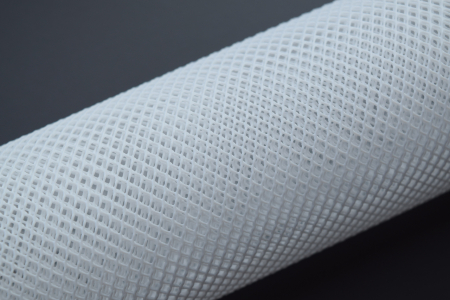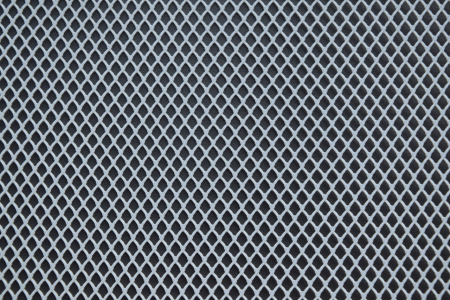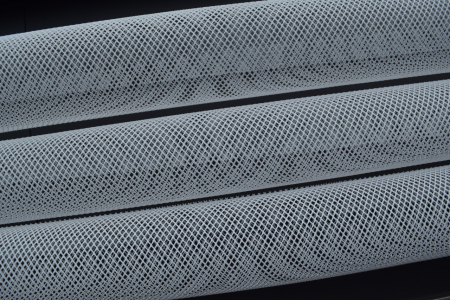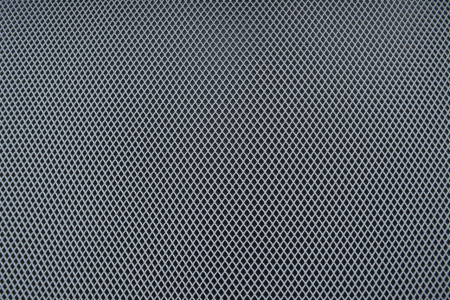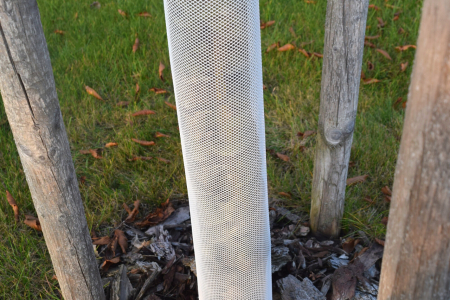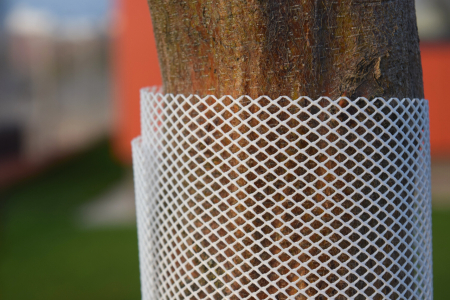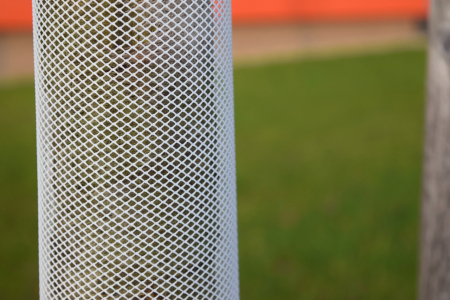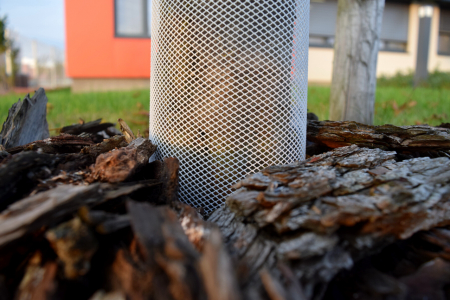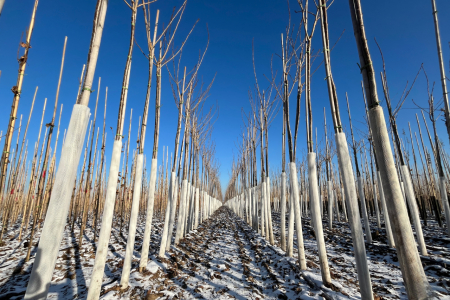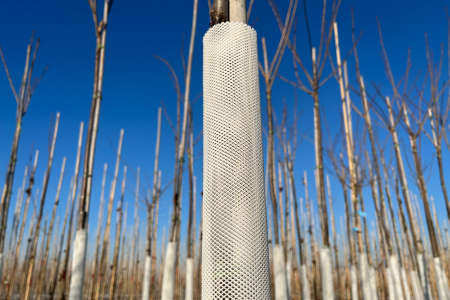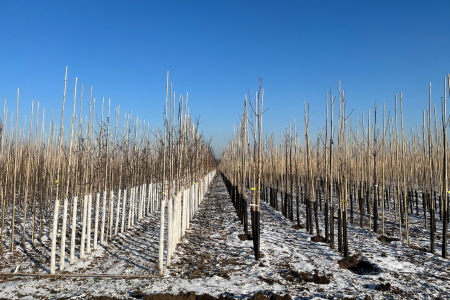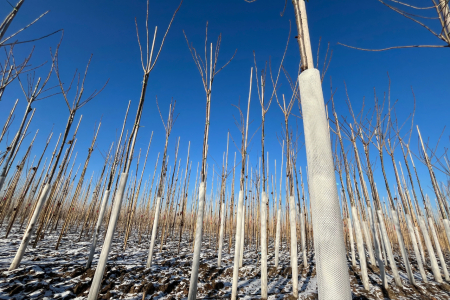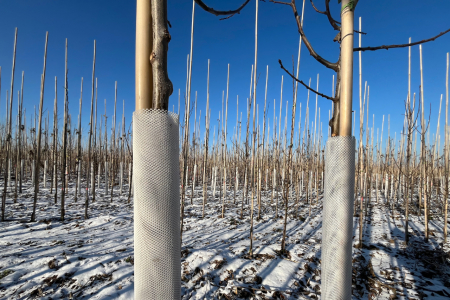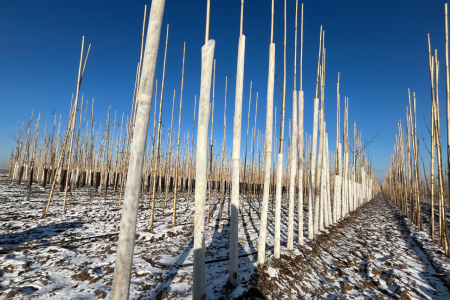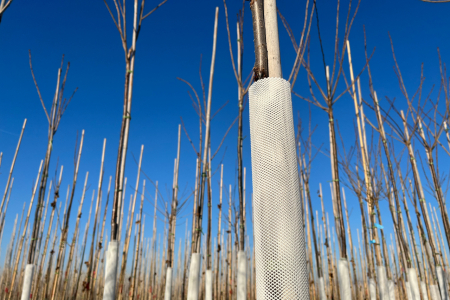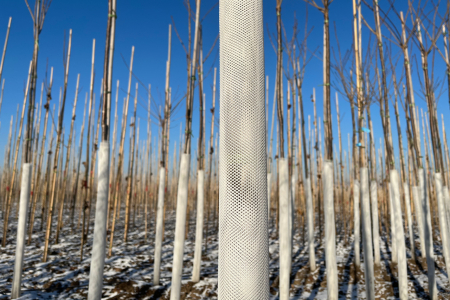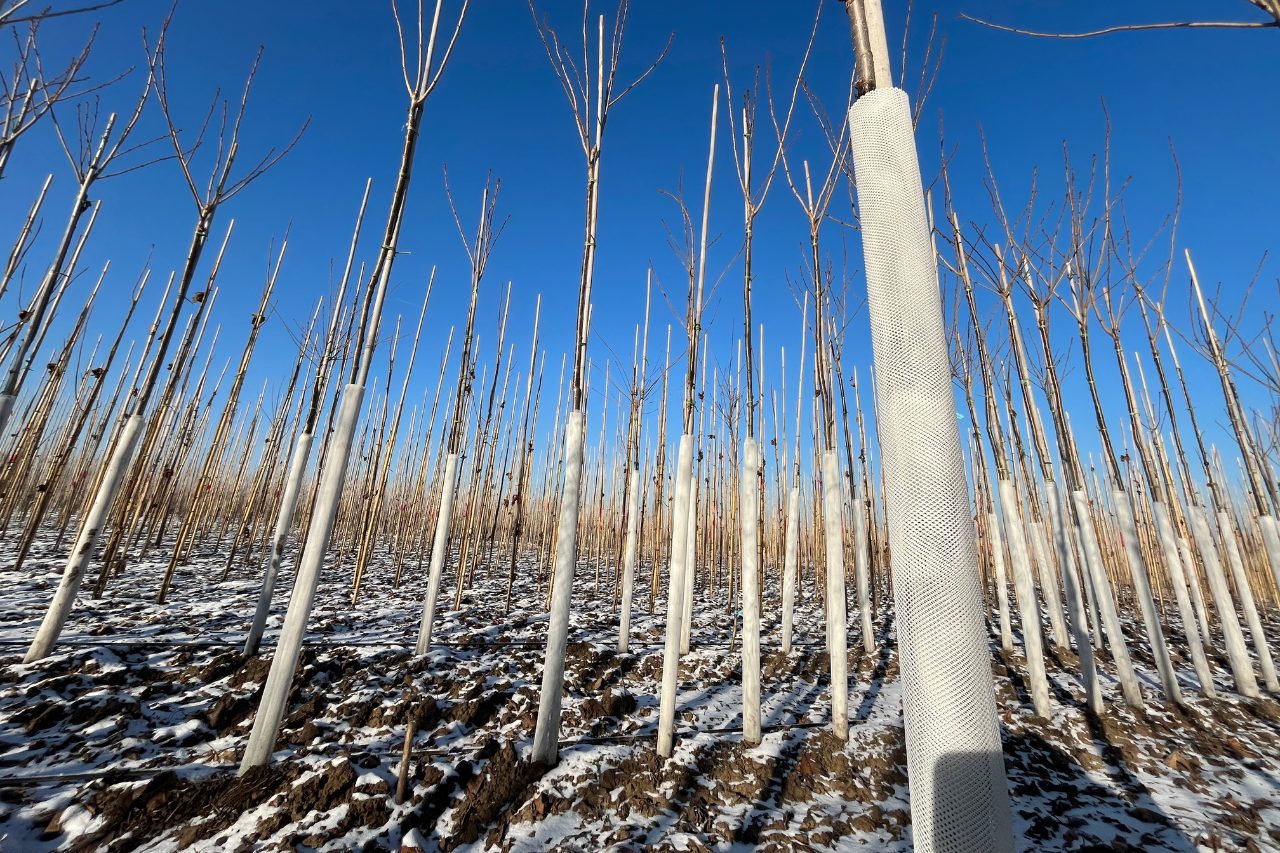
By default, our TreeFlex trunk guards come in black colour, and their main purpose is to protect trees from animal damage.
OUR TIP: Here’s more on plastic mesh tree guards and how to protect trees from animal damage.
White tree guards are a new addition to our portfolio. They work as a double protection: against both animal and frost damage.
Preventing Winter Damage to Trees
When winter turns to spring, temperatures often shift a great deal during the day. As temperatures rise high above 0 oC for a few days in a row, sap starts circulating in trees, making them come to life after their winter hiatus. When temperatures drop back under zero for the night, sap freezes, the intricate lacing inside the tree cracks, and so does bark. This collateral damage may be irreversible.
Such temperature drops are not just a spring thing; they might occur midwinter as well. Watch out for them especially if your trees are in a sunny spot, and always apply winter protection early on — preferably in autumn.
White Is the Colour of Winter
White is certainly a winter colour — but it doesn’t bear any association with snow when it comes to tree guards. In this case, white is the most suitable colour because it reflects sunlight. A tree under a white trunk protector doesn’t get too warm — which is important as you don’t want it to wake up too soon. White colour lowers the risk of your trees developing sunscald (cracked bark) and/or bursting into buds prematurely (which often results in buds getting killed by frost).
The traditional way of applying white on trees for winter is whitewashing (applying protective white paint on the trunks). White tree guards are the modern alternative. They’re easier to use — you don’t have to mix the paint and apply it to trees stroke by stroke. Putting a tree guard on is quick and simple — it saves you a lot of time (the more so if you have a lot of trees in your garden).
The plastic mesh tree guard is UV resistant.
How to Use White Tree Guards
Wrap your trees in protective tree trunk guards once they go into dormancy in autumn (when they shed leaves and/or stop growing). The time is usually right in November, but it always depends on your location and the actual weather.
The temperature should not drop under 3 ℃ when applying your tree guards — the plastic may crack if forced open in lower temperatures. Once put on a tree, temperatures around zero (and lower) are no longer a concern. Our customers are thrilled that our UV-resistant tree guards can be used 4 years in a row, still as good as new.
Once the risk of morning frost subsides in spring, take the guards off and save them for next winter. Feel free to keep white tree guards on all year round — as protection against animal damage.
Our tree guards can be put on any tree. The most common use is on solitary or alley trees which are more susceptible to winter damage. For catalpa (catawba) and gleditsia (honey locust), we don’t recommend using black tree guards at all. For trees not so prone to frost damage, use any colour of tree guards to protect them against animal damage.
Tree guards are suitable for both fruit and decorative trees.
OUR TIP: Get 110-cm tree guards for tall trees with long, lean trunks. The best fit for small trees (most orchard trees) are 80-cm tree guards. Tree guards are not used on dwarf trees — their trunks are too short.
Pick the Best Tree Guard
We supply black and white tree guards to orchard owners, farmers, and garden centres. Per request, we customise them and/or put on a branded label.
Get in touch — let’s see how we can be of service.
